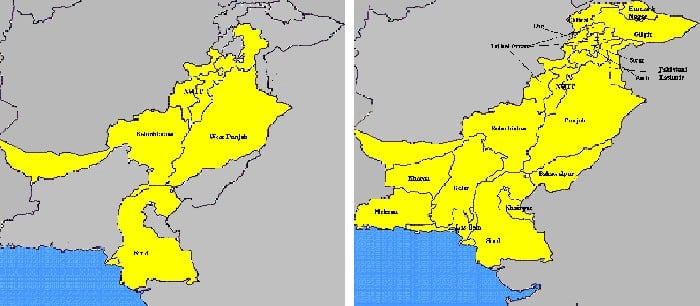
An understanding of how Pakistan was actually created and consolidated is essential if we are to comprehend and tackle the myriad of problems currently besetting Pakistan

If one picks up a general book on Pakistan it seems that the creation of Pakistan has only to do with the maneuverings of the All India Muslim League and its leader -- the Quaid-e-Azam Mohammad Ali Jinnah. Most of the books only focus on happenings in British India and the struggle for independence in those regions with little reference to the ‘other India’ -- Princely India, which in 1947 constituted nearly a third of the landmass of the Indian Empire and a fourth of its population.
Most texts which even mention the princely states mention them as if they existed in another world or parallel dimension and scarcely deal with them within the context of the unraveling of the British Indian Empire. This lack of focus on the princely states prevents a better understanding of not only the process of decolonisation but also the creation and consolidation of both India and Pakistan as post-colonial states. The continuing impact of these states on the state and polity of both India and Pakistan is also ignored in this manner.
Professor Barbara N Ramusack in her seminal volume in the New Cambridge history of India, The Princes of India and their States, noted how when the time came for the selection of a mascot for the new Air India the democratic Indian government chose none other than a ‘smiling Maharaja’ to represent India to the world. Today from the dazzling palaces turned hotels in Rajasthan to the spectacular success some former princes and scions achieve in parliamentary elections, the princes of India might not be ruling any longer, but are still visible political powers and powerful symbols of culture and religion. The former states, with their respective histories, cultural traditions, and ways of life are still affecting and will continue to affect life, politics, and development in India.
In the Pakistani context, while there might not be many grand palaces or very large states, the creation of what we now know as Pakistan has a lot to do with the princely states. As the map below shows western Pakistan was less than 50 per cent of what it is now, as the partition plan of June 3rd, 1947 only applied on British India.
The princely states -- a good five hundred or so, became legally independent with the lapse of British paramountcy on August 15, 1947 and they could theoretically either join India or Pakistan or even remain independent. This meant that there could potentially be hundreds of independent principalities adjoining India and Pakistan. However, both the future government of India and Pakistan, and the governments in London and Washington wanted the princely states to accede to either India or Pakistan, in order to prevent the balkanisation of the subcontinent (discussed in an earlier article here).
It took eight long months for western Pakistan (at that time East Bengal was also part of Pakistan, in case readers forget!) to take shape. This was a result of months of arduous negotiations with different states and several promises being made to the acceded states and their rulers. While the accession of Bahawalpur and Khairpur was fairly easy, the accession of Junagadh -- the first state to accede to Pakistan -- led to a blockade by India and its eventual occupation by India. Concerning the four Frontier states of Chitral, Dir, Swat and Amb, the chances of any one of them -- especially Dir -- acceding to Afghanistan were rather high, while Kashmir claimed suzerainty over Chitral.
In these circumstances while all four states did accede to Pakistan, Governor General Jinnah did not accept their Instruments of Accession till months later, concerned about the effect on their accession on Pakistan’s relations with India and Afghanistan.
The accession of Kalat -- which constituted most of the present province of Balochistan -- was the most tricky. The Khan of Kalat, Mir Ahmed Yar Khan, who used to call Jinnah his ‘father’ was unwilling to accede to Pakistan. The House of Commons and the House of Lords of Kalat State were vociferously against accession to Pakistan, and wanted a treaty relationship -- based on sovereign equality -- between Kalat and Pakistan. It was only after a protracted period of negotiations and certain tactics used by the Pakistani bureaucracy, and strange help of All India Radio, that Kalat finally acceded to Pakistan on March 27, 1948. Thus, it was only with the accession of Kalat on March 27, 1948, that western Pakistan took its current shape on the map.
Pakistan’s first decade was the most critical phase in the development of the country. The ideas, decisions, problems and issues of that time are still important considerations in the country. An understanding of how Pakistan was actually created and consolidated is essential if we are to comprehend and tackle the myriad of problems -- from the insurgency in Balochistan to the separate province movement in south Punjab -- which currently beset Pakistan.